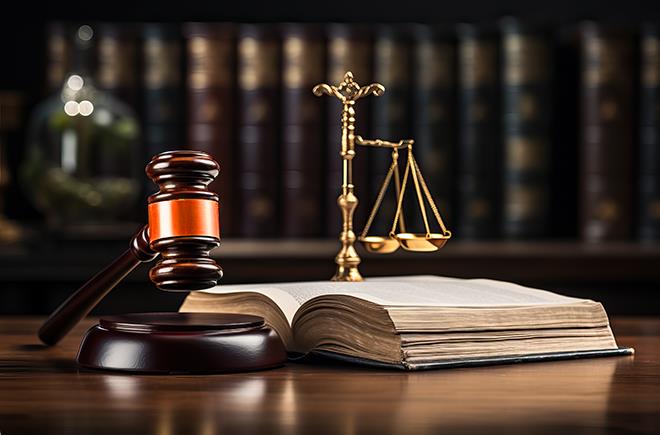Environmental Litigation: Piercing the Corporate Veil, Alter Ego, and Successor Liability

Course Details
- smart_display Format
On-Demand
- signal_cellular_alt Difficulty Level
Intermediate
- work Practice Area
Environmental
- event Date
Thursday, January 30, 2025
- schedule Time
1:00 p.m. ET./10:00 a.m. PT
- timer Program Length
90 minutes
-
This 90-minute webinar is eligible in most states for 1.5 CLE credits.
This CLE webinar will provide environmental litigators with an analysis of legal theories that, in unique circumstances, allow private and government litigants to name parent corporations, shareholders, or successors in interest as responsible parties for the ongoing and historical acts of a company in violation of environmental laws--namely, piercing the corporate veil or alter ego liability and successor liability under common law and CERCLA.
Faculty

Mr. Riesel has litigated a wide variety of cases which include numerous environmental matters, white collar defense, civil rights, and commercial matters. His litigation has resulted in overturning Army Corps of Engineers wetland rules, vacating EPA’s promulgation of ocean dumping rules, and a dismissal of restrictions on the broad reach of RCRA citizen suits. Since 1980, Mr. Riesel has been an active participant in numerous CERCLA administrative and judicial actions, representing various Fortune 500 corporations. His litigation has resulted in the establishment of CERCLA defenses and the recovery of significant response costs. He recently successfully represented several industrial clients charged with environmental crimes. Mr. Riesel is a former Chief of the Environmental Protection Unit of the U.S. Attorney’s Office, Southern District of New York.

Mr. Warren’s practice focuses on environmental and land use litigation, environmental review of development projects, and regulatory compliance counseling. His experience includes environmental review and permitting of development projects under the National Environmental Policy Act and the New York State Environmental Quality Review Act; negotiation and resolution of environmental enforcement matters before state and local agencies, including under the New York Brownfield Cleanup Program; advising clients on waterfront development projects; and representing clients in litigation concerning local zoning and land use issues. Mr. Warren has also represented clients in federal litigation concerning the emerging contaminant 1,4-Dioxane. Prior to joining the firm, he clerked on the U.S. District Court for the Southern District of New York and on the U.S. Court of Appeals for the Fourth Circuit.
Description
Environmental investigations and remediation expenses are costly. Private litigants and state and federal governments often seek viable "deep pocket" entities or high net worth individuals to pay for the cleanup costs allegedly attributable to an otherwise defunct or underfunded company's historical operations that caused the environmental contamination.
In the typical scenario, the separate entity (parent company, shareholder, or successor in interest) does not own, lease, or operate the facility at issue, nor did it directly release a hazardous substance into the environment. And often, the former company was dissolved years ago and incorporated in an entirely separate state.
Thus, the parent company, shareholder, or successor-in-interest is blindsided by the claims letter, lawsuit, or enforcement order--all of which require a strategic and accurate response. This type of indirect liability can be a real threat in any environmental litigation if pleaded correctly and supported by facts and not met by a strong, well thought out and supported defense. As such, environmental litigators must be adept at using or defending against these theories of liability before they arise.
Listen as our panel provides environmental litigators with an analysis of legal theories of alter ego and successor liability as they relate to environmental liabilities at cleanup sites and provides guidance on factors to consider and best practices for defending against such allegations.
Outline
- Overview of liability of corporate parents, shareholders, and successors under common law for environmental derelictions
- Piercing the corporate veil under prevailing common law doctrines
- Operator liability under CERCLA for parent corporations and managers for subsidiary's actions
- Liability arising from mergers and successions
Benefits
The panel will review these and other key issues:
- What issues should be considered when faced with a litigant who seeks to pierce the veil of your corporate client or hold your client responsible for the actions of a predecessor?
- What factors do courts look at when deciding whether to apply the alter ego and successor liability theories?
- What are some key considerations and best practices for corporations and related entities defending alter ego and successor liability claims?
Related Courses

Microplastics Regulation and Litigation: Emerging Trends, Significant Cases, Key Takeaways
Monday, February 24, 2025
1:00 p.m. ET./10:00 a.m. PT
Recommended Resources
Transforming CLE from a Requirement to a Career Advantage
- Learning & Development
- Career Advancement
- Talent Development
How to Build a Standout Personal Brand Without Sacrificing Billable Hours
- Career Advancement